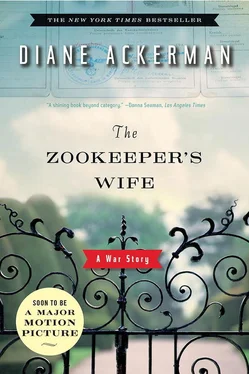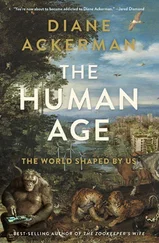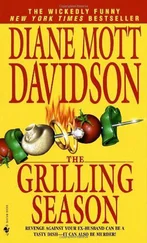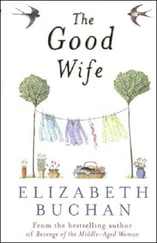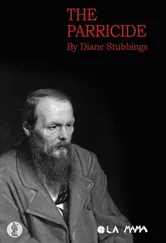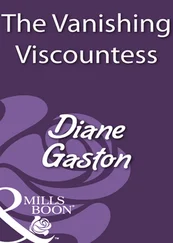Wiedensaul, Scott. The Ghost with Trembling Wings: Science, Wishful Thinking, and the Search for Lost Species . New York: North Point Press, 2002.
Wiesel, Elie. After the Darkness: Reflections on the Holocaust . New York: Schocken Books, 2002.
Żabíńska, Antonina. Ludzie i zwięrzata ( People and Animals ). Warsaw: Czytelnik, 1968.
———. “Rysie” in Nasz dom w ZOO ( Our House in the Zoo ). Warsaw: Czytelnik, 1970.
Żabiński, Jan. “ Relacja… ( A Report… a personal reminiscence of Dr. Jan Żabínski deposited with the Jewish Historical Institute after World War II),” no. 5704, n.d. Reprinted in Biuletyn Żydowskiego Instytutu Historycznego w Polsze (Warsaw), no 5. 65–66 (1968).
Zaloga, Steven J. Poland 1939: The Birth of Blitzkrieg . Oxford: Osprey Publishing, 2002.
Zamoyski, Adam. The Polish Way: A Thousand Year History of the Poles and their Culture . New York: Hippocrene Books, 2004.
An Alchemy of Mind
Cultivating Delight
Origami Bridges
Deep Play
I Praise My Destroyer
A Slender Thread
The Rarest of the Rare
A Natural History of the Senses
A Natural History of Love
Jaguar of Sweet Laughter
Reverse Thunder
On Extended Wings
Lady Faustus
Twilight of the Tenderfoot
Wife of Light
The Planets: A Cosmic Pastoral
FOR CHILDREN
Animal Sense
Monk Seal Hideaway
Bats: Shadows in the Night
ANTHOLOGY
The Book of Love (with Jeanne Mackin)

W. W. NORTON & COMPANY
New York • London
Copyright © 2007 by Diane Ackerman
All rights reserved
For information about permission to reproduce selections from this book, write to Permissions, W. W. Norton & Company, Inc., 500 Fifth Avenue, New York, NY 10110
For information about special discounts for bulk purchases, please contact W. W. Norton Special Sales at specialsales@wwnorton.comor 800-233-4830
ISBN 978-0-755-36504-3
W. W. Norton & Company, Inc.
500 Fifth Avenue, New York, N.Y. 10110
www.wwnorton.com
W. W. Norton & Company Ltd.
Castle House, 75/76 Wells Street, London W1T 3QT
A few years back, burglars broke into the Warsaw Zoo’s aviary and stole various owls, a raven, and a condor, and officials assumed they nabbed the owls and raven to mislead, their real target being the condor, whose black-market value had soared. On another occasion a robber stole a baby penguin. Zoo abductions happen everywhere, usually commissioned by breeders or laboratories, but sometimes by individual collectors. Notably, a beautiful cockatoo stolen from the Duisburg Zoo was later found dead and stuffed, in the apartment of a couple who had received it as an anniversary present.
Pogo sticks, all the rage of the 1920s, were actually patented by the American George Hansburg.
Flamingos look like they have backward-facing knees, but those are actually their ankles. Their knees float higher up, hidden by feathers.
In 2003, Magdalena Gross’s sculpture Chicken was auctioned by the Piasecki Foundation to help raise money for autism research in Poland.
Many of these details come from Helena Boguszewska, who owned a neighboring property.
Antonina’s recollection is matched by that of Wiktor Okulicz-Kozaryn, a retired engineer, who watched the same scene as a boy, and remembers “German aircraft flying low over the crowd, shooting and killing many people… [and] two Polish planes attacking a German bomber above a field, the plane flaming, then one parachute floating down near some trees.”
Friedrich Nietzsche, The Twilight of the Idols (1899).
Jukeboxes were invented in the 1930s, to supply music in back-road jooks—Carolina creole for joints that were a combination of bawdy house, gambling den, and dance shack.
Stefan Starzyński, quoted in Warsaw and Ghetto (Warsaw: B. M. Potyralsey, 1964).
Rommel quoted in Israel Gutman, Resistance: The Warsaw Ghetto Uprising (New York: Houghton Mifflin, 1994), p. 12.
Proceedings of the Trial of the Major War Criminals Before the International Military Tribunal, Nuremberg, vol. 290, ND 2233-PS; quoted in Anthony Read, The Devil’s Disciplines: Hitler’s Inner Circle (New York: W. W. Norton, 2004), p. 3.
Adam Zamoyski, The Polish War: A Thousand Year History of the Poles and Their Culture (New York: Hippocrene Books, 1994), p. 358.
Jan Żabiński quoted in a Yiddish newspaper, in Israel, on the occasion of the Żabińskis being honored by Yad Vashem as “Righteous Among Nations.” Newspaper article provided by Ryszard Żabiński.
Heinz Heck became director of the Hellabrunn Zoo in Munich in 1928, where he remained until 1969.
Esperanto was invented in 1887 in Białystok by Dr. Ludovic Lazar Zamenhof, an eye doctor, who chose the pseudonym of “Doktoro Esperanto” (Dr. Hope). Immersed in Białystok’s polyglot world, he noted how much distrust and misunderstanding between ethnic groups stemmed from language barriers, so he designed a neutral lingua franca.
Lutz Heck, Animals—My Adventure , trans. E. W. Dickies (London: Methuen, 1954), p. 60.
Though Polish scientist Tadeusz Vetulani had tried the same back-breeding process years before without success, Heck stole Vetulani’s research and, ultimately, thirty animals, which he sent to Germany, later installing them in Rominten and then Białowieża.
Much as Hitler publicly championed a fit, vigorous Aryan race, Goebbels had a clubfoot, Göring was obese and addicted to morphine, and Hitler himself seems to have been suffering from third-stage syphilis by the end of the war, addiction to uppers and downers, and quite possibly Parkinson’s. Hitler’s doctor, Theo Morell, a renowned specialist in syphilis, accompanied him everywhere, syringe and gold-foil-wrapped vitamins at the ready. Rare film footage shows Hitler using his steady right hand to shake hands with a line of boys, while his left, hidden behind his back, displays Parkinson’s distinctive tremor.
What were his so-called vitamins? According to criminologist Wolf Kemper ( Nazis on Speed: Drogen im 3. Reich [2002]), the Wehrmacht commissioned an array of drugs that would increase focus, stamina, and risk-taking, while reducing pain, hunger, and fatigue. Between April and July of 1940, troops received over 35 million 3-milligram doses of the addictive and mood-altering amphetamines Pervitin and Isophan.
In a letter dated May 20, 1940, twenty-two-year-old Heinrich Böll, then stationed in occupied Poland, despite his “unconquerable (and still unconquered) aversion to the Nazis,” wrote his mother in Cologne to rush him extra doses of Pervitin, which German civilians were buying over the counter for their own use. (Leonard L. Heston and Renate Heston, The Medical Casebook of Adolf Hitler [London: William Kimber, 1979], pp. 127–29.)
Читать дальше
